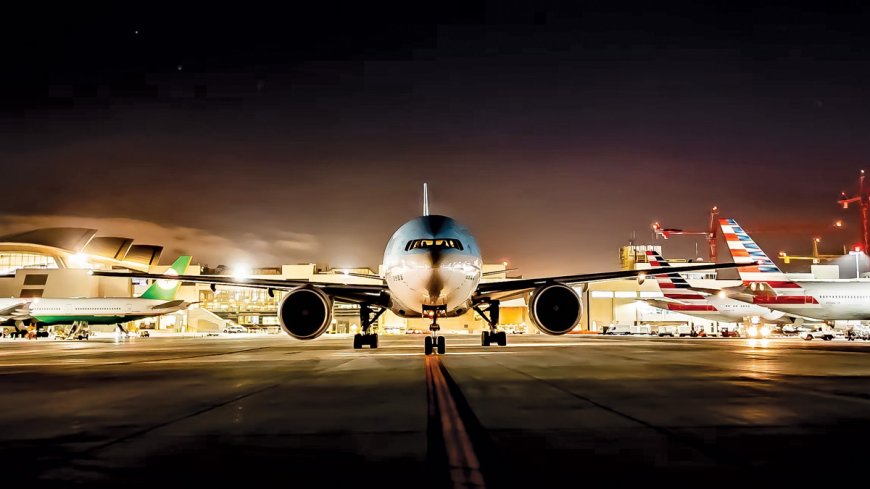CREATING A PARADIGM SHIFT

Indian civil aviation industry has emerged as one of the fastest-growing in the country during the last three years. India has become the third-largest domestic aviation market in the world and is expected to overtake the UK to become the world’s third-largest aviation market by 2024. With a market size of US$ 16 billion, India is the tenth-largest civilian aviation market. The airport sector in India is experiencing a paradigm shift, with significant infrastructure developments aimed at increasing last-mile air connectivity.
Demand drivers
The aviation sector in India has emerged as one of the fastest growing sectors in the country, with rise in air travel demand going up considerably. It is necessitating and demanding the development of a robust aviation sector ecosystem. India’s airports & aviation sector is currently growing rapidly, backed by significant investments and numerous opportunities despite facing some challenges. Passenger traffic is soaring due to a rising middle class, affordable air travel, and increased domestic tourism. Enhanced air connectivity fosters trade, tourism, and investment, collectively driving overall economic growth.
There has been a significant upsurge in the air travel demand. In FY 23-24 the total passenger availing air transport is around 377 million, whereas, the story was quite different few years back, say in 2014 with 169 million passengers using air transport. In spite of situations like pandemic, the air travel demand remained in increasing trend with a growth of 123% in last 10 years, except setback for few years. The overall air passenger traffic is expected to witness a growth of around 8-11 per cent on-year to around 407-418 million in FY2025, said a report by ICRA. The growth, it added, will be supported by strong pick-up in both leisure and business travel, improving connectivity to newer destinations in the domestic segment and the continued uptick in international travel. In FY2024, passenger traffic had already reached 376.4 million, up 15 per cent YoY, surpassing the pre-Covid level by 10 per cent.
Airport developments
New airports are being developed, and existing ones expanded, to handle the increased traffic. Significant projects include the Navi Mumbai Airport, Jewar Airport near Delhi and developments in Bagdogra, Varanasi, Hyderabad, Chennai, and Bengaluru.
The Union Cabinet approved the proposal of Airports Authority of India (AAI) for development of Lal Bahadur Shastri International Airport, Varanasi, including construction of new terminal building, apron extension, runway extension, parallel taxi track & allied works. The estimated financial outgo will be Rs 2869.65 crore for enhancing the passenger handling capacity of the airport to 9.9 million passengers per annum (MPPA) from the existing 3.9 MPPA. The New Terminal Building, which encompasses an area of 75,000 sqm is designed for a capacity of 6 MPPA and for handling 5000 Peak Hour Passengers (PHP). It is designed to offer a glimpse of the vast cultural heritage of the city.
The proposal includes extending the runway to dimensions 4075m x 45m and constructing a new Apron to park 20 aircraft. Varanasi airport will be developed as a green airport with the primary objective of ensuring environmental sustainability through energy optimization, waste recycling, carbon footprint reduction, solar energy utilization, and incorporation of natural daylighting, alongside other sustainable measures throughout the planning, development, and operational stages. Over the past decade, 75 new airports have been built, increasing the total number to 148. The government plans to raise this number to 200 in the next four years. Recently, 15 new airport projects were inaugurated, including new terminal buildings at 12 airports.
The UDAN scheme has been pivotal in improving regional connectivity with new airports linking smaller towns and cities to major urban centers, to facilitate regional economic growth. It has improved connectivity, given a boost to tourism with better access to both popular and emerging tourist destinations that in turn lead to higher revenue for local businesses, including hotels, restaurants, and tour operators.
UDAN is also being boosted with an allocation of Rs 502 crore in the FY25 budget. These funds are allocated for the revival of 22 airports, initiating 124 air routes, and providing viability gap funding to enhance connectivity in the northeast. Additionally, the budget included provisions to revive 50 more airports, further supporting the expansion of the aviation sector and ensuring last-mile connectivity across the country.
The AAI has planned significant capital expenditure for modernizing existing airports and constructing new ones in cities like Varanasi, Bagdogra, Pune, Tiruchirappalli, Kochi, Gorakhpur, Guwahati, Patna, and Jaipur. Additionally, the government is encouraging foreign direct investment (FDI) in airport infrastructure, bringing in more capital and technological knowledge.
Sustainability initiatives
Ministry of Civil Aviation (MoCA) has taken initiatives for working towards Carbon neutrality at airports in the country. According to recent government announcement, the airport operators including AAI have installed solar power plants at various locations/airports for generation and self-consumption of green and renewable energy to encourage green energy usage at the airports. In addition, few airports are also procuring green energy through open access. Since 2014, a total of 73 airports have switched over to 100% green energy usage.
Buoyant outlook
Looking forward, the government has set ambitious targets to further increase the number of air travellers, and the fast-growing economy is boosting both aviation traffic and cargo, with a stronger focus on regional connectivity and sustainability. As a result, more Tier 2 and Tier 3 cities are getting connected to major metros and more green airports and eco-friendly practices being adopted. The airports and aviation sector is on a path of transformation, balancing growth with the need to address capacity, despite various challenges.







